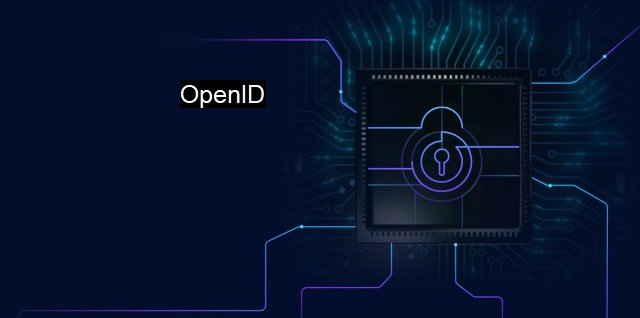What is OpenID?
The Benefits and Simplification of OpenID: Online Authentication Made Easy through Common Identity Management System
OpenID is an open standard and decentralized authentication protocol that enables users to authenticate to multiple websites using a single identity. Promoted by the non-profit OpenID Foundation, it was developed to solve the issue of managing multiple usernames and passwords on multiple websites, reducing potential vulnerabilities to cyber threats.OpenID plays a critical role. It minimizes the need for users to keep track of different usernames and passwords for different online platforms, consequently reducing human errors often committed while managing such digital credentials. Since these mistakes can lead to exploitable security vulnerabilities, the use of OpenID can indirectly decrease the overall network susceptibility to cyber attacks.
The OpenID operates in a similar fashion to how credit cards and payment gateways work. Once the OpenID is linked to the user's account, it can be used for all websites that support the OpenID standard. This eradicates the need for maintaining several usernames and resulting mix-ups during authentication.
OpenID carries numerous advantages that substantially contribute to enhanced cybersecurity. One of these benefits includes allowing users to use stronger, more complicated passwords for their accounts, getting rid of the need to remember each one. Even if the user opts for complex passwords, they must only remember the ones they use for an OpenID, making user security more manageable and stronger.
OpenID uses secure SSL/TLS communication for all transactions, which ensures that user data is safe during transit. This mechanism introduces an added layer of safety and augmentation against cyberattacks. the OpenID protocol reduces password fatigue and eliminates weak password choices, thereby heightening cybersecurity.
OpenID offers users control over the information released to a website, advancing Internet privacy. The user determines the amount of private information shared with an online service or social media site. This also makes it an efficient solution to phishing scams as one can rest assured their information is safe.
Contrariwise, using OpenID is not without potential shortcomings in cybersecurity. As while this protocol significantly decreases the likelihood of password-related breaches, it also forms a single point of failure. Should the user’s OpenID be compromised, all accounts linked to it are at risk, forming a significant cybersecurity issue.
Being a decentralized system, it relies heavily upon the user–something the world of antivirus and cybersecurity doesn't typically recommend. By depending on the individual to ensure their OpenID server is secure, it leaves room for vulnerabilities that can be exploited by cybercriminals if they neglect protocol.
OpenID Connect, a simple identity layer on top of the OAuth 2.0 protocol, enables clients to verify the identity of the end-user based on its authentication performed by an authorization server. It also provides basic profile information, leading to an extra layer of convenience and security.
In the context of cybersecurity and antivirus frameworks, OpenID may be seen in two different lights. One cannot dismiss its convenience due to the reduction of data breaches because of fewer passwords. On the other hand, it also opens up room for negligence on the users' part, leading to detrimental consequences, and notably the probability to be a single point of failure.
Taking everything into account, while OpenID might not be flawless, it represents a leap toward a more user-friendly, secure internet. Even with potential problems, as long as users stay vigilant in safeguarding their OpenID credentials and maintaining their server's security, the advantages offered by OpenID in enhancing cybersecurity are significant and far-reaching. OpenID, indeed, symbolizes an integral part of the continuously evolving cybersecurity landscape.

OpenID FAQs
What is OpenID in cybersecurity?
OpenID is an open standard that enables users to authenticate and authorize themselves on different websites without using multiple usernames and passwords. It is a decentralized authentication protocol that eliminates the need for website-specific login systems, making online transactions more secure.How does OpenID work?
OpenID uses an identity provider (IDP) to verify a user's identity and provide authentication tokens to websites. When a user logs in to a website using OpenID, the website redirects them to the IDP where they authenticate themselves. The IDP then sends an authentication token back to the website, which verifies it and logs the user in.What are the benefits of using OpenID in antivirus software?
OpenID makes it easier and more secure for users to log in to different antivirus programs and websites. By eliminating the need for multiple usernames and passwords, OpenID reduces the risk of password-related attacks, such as phishing and brute-force attacks. It also simplifies the login process, making it easier for users to manage their online identities.Is OpenID safe to use for cybersecurity?
OpenID is generally considered safe to use for cybersecurity, as it uses encryption and authentication protocols to protect user data. However, as with any security system, there are potential vulnerabilities that could be exploited by hackers. To reduce the risk of data breaches or other security incidents, it is important to use OpenID with reputable identity providers and websites, and to follow best practices for online security, such as using strong passwords and avoiding public Wi-Fi networks.Related Topics
Single Sign-On (SSO) Authentication Protocols Identity and Access Management (IAM) OAuth Security Token Service (STS)
| | A | | | B | | | C | | | D | | | E | | | F | | | G | | | H | | | I | | | J | | | K | | | L | | | M | |
| | N | | | O | | | P | | | Q | | | R | | | S | | | T | | | U | | | V | | | W | | | X | | | Y | | | Z | |
| | 1 | | | 2 | | | 3 | | | 4 | | | 7 | | | 8 | | |||||||